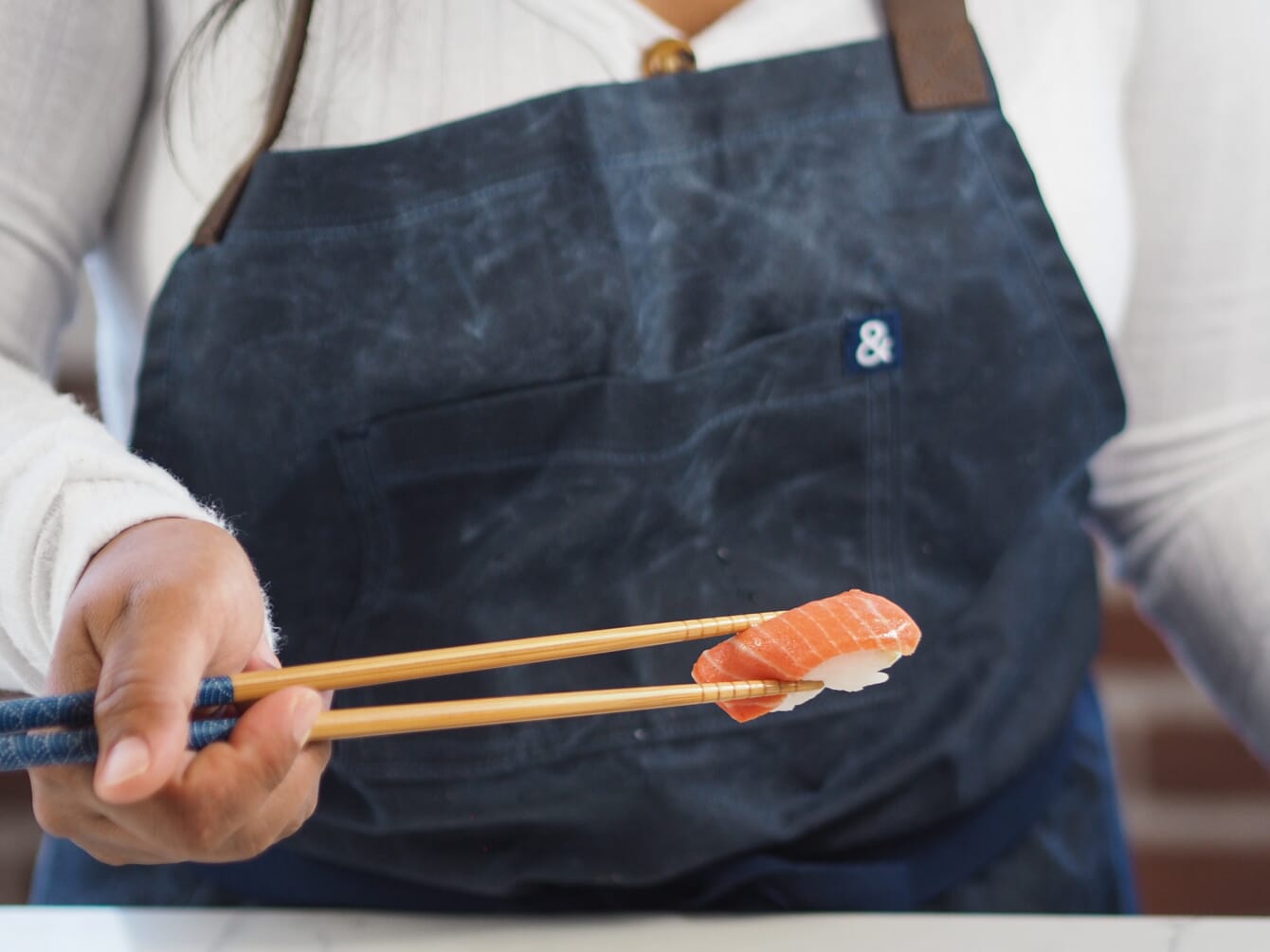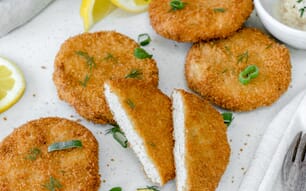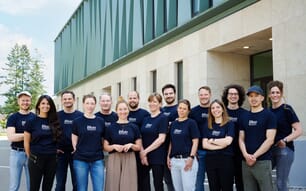
GFI might be a non-profit working internationally to accelerate alternative protein innovation, but she is also aware of the potential perils and pitfalls of these fledgling sectors.
Who are the most promising contenders among both cell- and plant-based seafood producers?
Because the space is still pretty small and because the seafood industry is so varied, every single company in the alternative seafood sector is doing something unique and every single company is a strong contender to really lead the industry. Startups are taking on a range of species and product forms across production platforms, making each of their contributions to the industry truly unique. There is no clear leader in the space, but we might see some gaining stronger market shares than others in the next few years, as retail and foodservice rollouts continue to ramp up.
A few recent highlights worth mentioning include: Novish launching their plant-based fish burgers and fish sticks in quick service outlet Nordsee locations across Europe and cultivated seafood maker BlueNalu just signed two exciting MoU’s, one with Mitsubishi Corporation and one with Thai Union.
That being said, every single company in the space is doing something exciting — if you look for news on any of them, you will find announcements about major investments, product tastings, retail partnerships, and more. Cultivated salmon producer Wildtype has been putting out some stunning photos recently.
On the other end of things, there is some great leadership happening in the conventional seafood industry as well. Thai Union is both producing their own plant-based seafood products and partnering with alternative seafood startups like BlueNalu. Bumble Bee Foods has a joint venture for distribution with plant-based seafood maker Good Catch. The more commitment we see from the established seafood industry to producing fish and shellfish in new ways, the more capital (and manufacturing capacity) the industry can access.
What are your thoughts on the pros and cons of cultured vs plant-based seafood?
There are benefits to both and I think they will each play a role in the future of seafood. One particular draw of alternative seafood is a potential gap in seafood supply relative to demand in the coming decades. With wild fishing on the slight decline and aquaculture growing (but not rapidly enough to meet projected demand from growing population and incomes), alternative seafood can supplement conventional seafood. There really is room for everyone.
Consumers might choose plant-based or cultivated seafood based on specific dietary needs or preferences. For example, some avid seafood fans might prefer cultivated seafood because it is genuine fish or shellfish tissue. Others with allergies to conventional seafood will have to go with plant-based seafood to get the culinary experience of seafood without the allergens. Once the market scales, consumers will be able to buy the seafood products they love without the risk of contamination or species fraud.

© Wild Type
I should also mention that we imagine a future where there is less of a distinct line between the two production platforms and alternative seafood products fall somewhere along a spectrum of plant-based and cultivated seafood. For example, we could certainly see a plant-based tuna product with cultivated fat on the market in the future. We’re also seeing increased adoption of fermentation technology in alternative protein generally, either as the main production technology or as functional ingredients.
What are the current challenges?
We are still very much in the early days of alternative seafood.
- Production challenges: companies are still working on getting products to match the sensory experience of their conventional counterparts.
- On plant-based: we have seen a lot of progress here but getting the delicate flaky texture of a fish fillet is an example of a challenge. Getting a fishy aroma without “too much” of a fish smell and taste is another challenge. In general, there is a big need for manufacturing capacity across the plant-based industry as companies start to scale to meet consumer demand (and work towards lower costs).
- On cultivated: there has been a lot less foundational research done on fish cell culture than mammalian cell culture, so each company is really starting from scratch. GFI is funding some foundational, open-access research on some of these questions but we are big advocates for substantial government funding for research and development to support the entire field.
- On nutrition: we don’t see any reason why alternative seafood can’t meet and exceed the nutritional profiles of conventional seafood without the risks of consuming conventionally produced products (the main example being mercury, but some consumers are also concerned about PCBs, microplastics, foodborne illness, allergenicity, etc). One opportunity that we see alternative seafood producers increasingly taking advantage of is aquatic plants as ingredients — seaweed (and microalgae) can give products both the sensory and nutritional benefits we associate with fish and shellfish. After all, fish get their omega-3 content from their own algae-rich diets! Why not take out the middleman?
GFI did some US consumer research at the end of last year and found that – as expected – taste is table-stakes for alternative seafood. There is still pretty low awareness of the category but once consumers learn more about plant-based and cultivated seafood, about a third are open to trying each category. The primary consideration for getting consumers into the market is taste, and once that is achieved, environmental and health benefits can further expand the consumer base.
Why is alt-seafood lagging behind other alt-proteins?
There are a few reasons why alternative seafood is still a smaller category than alternative protein broadly. Plant-based seafood is about one percent of the US retail market for plant-based meat.
A few reasons include:
- There is not yet a dominant company leading plant-based seafood like there is for other meat and dairy categories. Having clear leaders in plant-based meat has helped the rest of the industry gain attention from consumers, retailers, foodservice companies, and others. Fortunately, plant-based seafood is capitalising on awareness and interest in the plant-based category generally and is also taking advantage of technical advances in producing plant-based proteins.
- Most consumers see conventional seafood as a healthy food. There is a bit less of an incentive therefore to try plant-based seafood compared to plant-based beef. However, given the risks to conventional seafood consumption, I think we’ll see more movement to the alternative seafood category for health reasons over time.
- It’s hard for consumers to understand seafood sustainability and ocean health. While the numbers on emissions and water use of beef production are easily understood, seafood is complex.
- See production challenges above.
I should mention, however, that the cultivated seafood industry is really accelerating. There are now several companies demonstrating proof of concept and great investment moving into the space.
Also, alternative protein is making a big splash and growing rapidly, but we are still in the early stages of the industry broadly.

© Shiok Meats
How would you like to see the sector develop in a manner that enables it to make a meaningful contribution to providing nutrition to a growing global population?
This is difficult to predict but we could see a few ways that this could happen:
- Alternative seafood could directly supply nutrients (omega-3 fatty acids, protein, micronutrients) to populations that don’t currently have access. Alternative seafood production does not need to happen in coastal areas and we think most products will have significantly longer shelf lives than their conventional counterparts, making distribution to a wide range of populations easier.
- Alternative seafood is inherently more efficient than conventional seafood. Instead of searching for animals in the wild or feeding animals to grow an entire fish, producers are just making the end product that consumers really want. More efficiency means more food available for our growing global population.
- We could also see alternative seafood actually be more appealing to some consumers than conventional seafood. For example, some consumers do not like the smell of conventional seafood or do not know how to cook it. By tweaking the end products to make them as appealing and accessible as possible, we could actually increase consumers’ willingness to eat alternative seafood relative to conventional. And with continued improvements in nutritional content, this could be a big win for global nutrition.
- On a less direct note, conventional industrial fishing is associated with depleted coastal fisheries that have historically been used by smaller scale and subsistence fishers. In a world where alternative seafood reduces overall fishing pressure, we could see those fisheries recover.
Do you think cell- and plant-based seafoods can provide livelihoods to a wide range of individuals, not just the big corporations?
Definitely. While we can’t fully predict the future, we could certainly imagine a world where a wide range of individuals is involved in the development of alternative seafood. The companies producing seafood for consumers will likely range from large corporations to small craft seafood producers. Beyond that, there are other ways that a range of livelihoods could be provided throughout the supply chain. For example, some alternative seafood products are taking advantage of seaweed ingredients for the sensory and nutritional profile of conventional seafood. Seaweed cultivation is just one of many livelihoods that could support alternative seafood and coastal communities, while also providing environmental benefits.
Because humans eat so many different species of seafood in so many different forms – and because there is huge geographical variation in what people like – I could certainly imagine a world where the alternative seafood industry is operating on many levels and scales to serve everyone.
Do you believe that alt-seafood could one day replace some traditional sources of seafood, and what are the pros and cons of this occurring?
It’s a bit hard to predict, especially given the still-growing aquaculture industry. While alternative seafood will probably supplement conventional seafood in the near term, I think we could certainly imagine a world where alternative seafood replaces some conventional production, especially the more industrial-scale seafood production, where consumers are purchasing fish despite the production method (not because of it). Giving people more options for how their seafood is produced is a win-win for consumers and sustainability.
Experts in the fisheries economics space often cite the need for coordinated policy to influence incentives and ensure that alternative seafood really makes a difference in the health of our oceans. Funding for alternative seafood research and development can be one element of broader policies that seek to reduce illegal, unreported and unregulated (IUU) fishing, establish marine protected areas, and increase accountability in the growing aquaculture sector.
This has the added benefit of mitigating any potential drawbacks of replacing conventional seafood production. Strong and comprehensive policy frameworks on global seafood production can help alleviate concerns like changing livelihoods — eventually, job transition policies might be helpful for preventing livelihood loss in conventional seafood.








